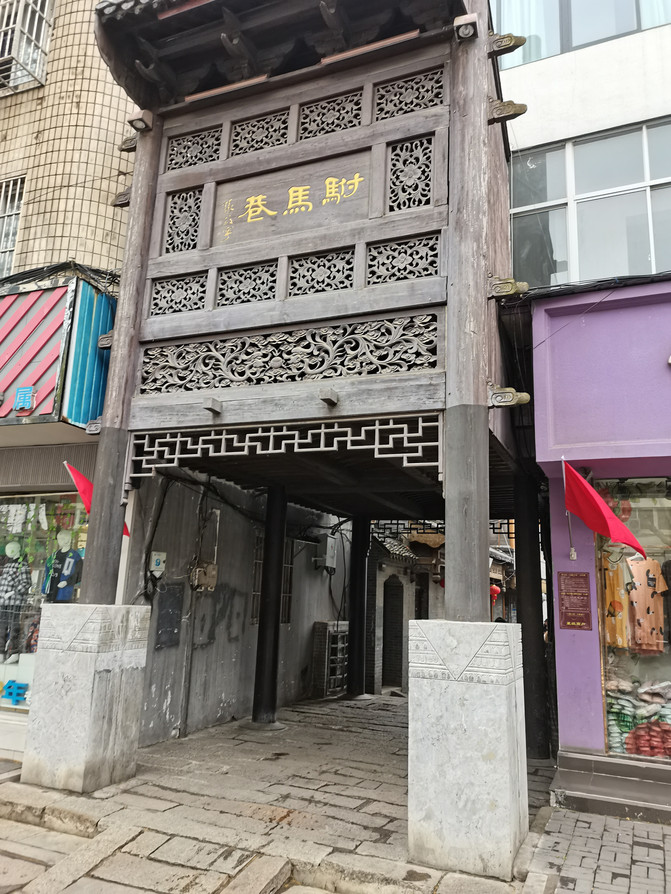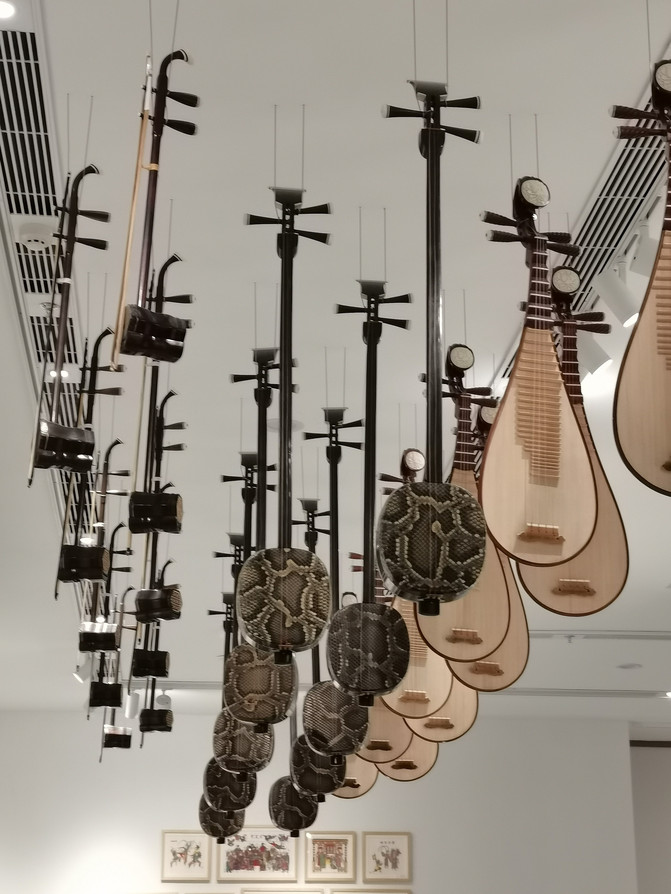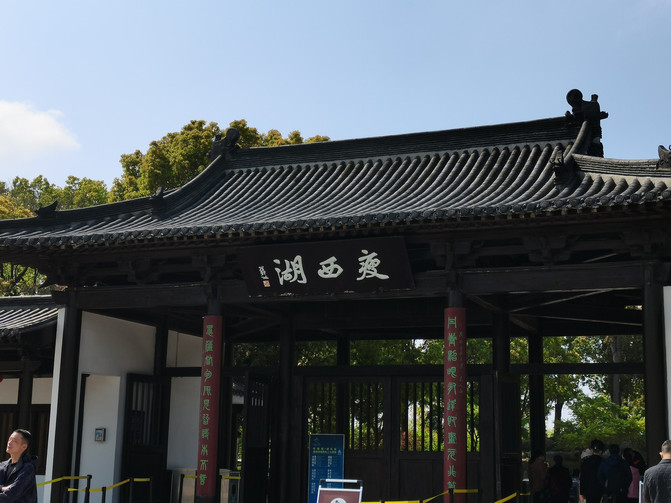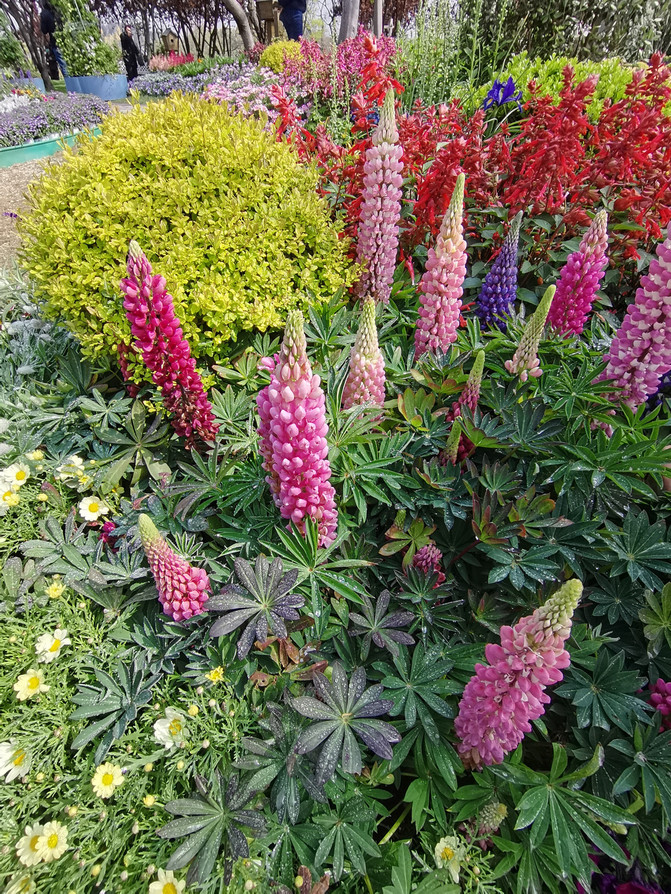Fireworks in Yangzhou in March, Huai'an Yangzhou flying twice for six days




We rode the little yellow bike there
Home of Zhou Enlai
The former residence is located in the old city area of Huai'an City. It is a northern Jiangsu residential house built between the Xianfeng and Guangxu periods of the Qing Dynasty. It is made of blue bricks and gray tiles, and is quaint and elegant. He was born here and spent 12 spring and autumn years. After leaving Huai'an, he never came back. In the former residence, you can see the room where he was born, the bedrooms of his family, and everything is like the childhood residence he saw in movies and TV shows, still presented in its original form. In addition, through various graphic materials and physical exhibitions, one can understand his flatness.
The first thing I saw was his reading place, where he followed the ancestral teachings to study at the family academy at the age of 5. Then he went to his parents' living room, and the east wing of the room was where he was born. Then you can visit the exhibition of childhood family affairs and hometown, as well as the exhibition room of life stories, to learn about his and his wife's stories. Let's take another look at his calligraphy stele corridor, kitchen and other scenic spots.
Don't miss out on a few scenic spots during the visit. There is an ancient well behind the pavilion, and not far from the well, there is a vegetable field in front of the kitchen. You can try pouring a bucket of water into the old well, which was how he poured water into the vegetable field back then. Secondly, in the backyard, there is a first-class plum tree, which symbolizes his character. Thirdly, there are two century old trees in the former residence, one is an elm tree and the other is a Guanyin willow tree





Lunch nearby at noon. A large bowl of Wonton with meat and shepherd's purse stuffing is 12 yuan. In the afternoon, Zhenhuai Tower

There are Huai'an Prefectural Office and China Canal Transport Museum nearby
Huai'an Prefecture Office Its lobby volume is relatively high in the country, with an area of over 500 square meters. The Huai'an Prefectural Office is a symbol and witness of Huai'an's historical status, with a grand scale.
The Huai'an Prefectural Office is one of the only two remaining government offices in the country, covering an area of over 50000 square meters. The office originally had more than 50 buildings and over 600 rooms. The main hall of Huai'an Prefecture is 10 meters high and covers an area of over 500 square meters. It is grand and majestic, and is one of the main halls of government offices in the country.
The Huai'an Prefecture Office was built on three roads: East, Central, and West. The central front section is an office building, mainly consisting of Yimen, Jieshifang, Zhengtang, Liuke, Ertang, etc; The rear section of the middle road is the residence of the governor and his family, mainly consisting of upper rooms, east and west wing rooms, Qingyu Hall, etc; The East Road is a venue for welcoming guests and banquets, mainly consisting of a stage, the Marquis of Fu Temple, the Baohan Hall, the Tenghua Hall, the Jixian Hall, and a backyard; The West Road is the military capture office, mainly consisting of buildings such as the main gate, ceremonial gate, main hall, second hall, upper room, third class room, warehouse, post office, and post station.
China Transport Museum

We didn't go in, we rode our bikes to the Zhou Enlai Memorial Hall,
Zhou Enlai Memorial Hall Located in the ancient city of "Old Huai'an", less than 2 kilometers away from Zhou Enlai's former residence. This museum area, which has won many awards in the national architecture industry, has symbolic meanings of remembering Zhou Enlai in the corners and heights of each building, giving an overall sense of solemnity and solemnity. Here, you can learn about Zhou Enlai's deeds and see many precious objects.
The main buildings of the museum area are arranged on the north-south axis, from south to north, including the viewing platform, the main hall of the memorial hall, the annex hall, the bronze statue of Zhou Enlai, and the imitation Beijing Central South Sea West Flower Hall. The main and auxiliary halls are located on a peninsula surrounded by water on three sides in the middle, and together with the western-style hall at the northernmost end of the central axis, they are the three main venues visited by tourists.
The main hall is divided into three floors. The first floor is the exhibition hall, which features rich and detailed pictures, physical objects, and television screens, introducing Zhou Enlai's life. The second floor is the hall of reverence, in the center of which stands the 4.7 meter high White Marble sculpture of Zhou Enlai. The third floor is an observation deck, which offers a panoramic view of the museum area and a distant view of the ancient city of Huai'an.
The annex is a two-story exhibition hall showcasing Zhou Enlai's life and achievements. On the first floor, there is a famous herringbone painting hall and a film and television hall. The calligraphy and painting hall displays calligraphy and painting works donated by well-known figures and artists from home and abroad to the Zhou Enlai Memorial Hall. The film and television hall mainly screens films and television shows of Zhou Enlai's life achievements.


Afterwards, I took Route 2 to the ancient town of Hexia, bought some food, and took a small train back to the hotel.


on the third day
Take bus No. 5 to Huai'an East Station, take the high-speed rail to Yangzhou East, and take a car straight to the Grand Canal Museum where you can store your luggage
It's really shocking, there are many pavilions, and the best ones are pavilions 2 and 3. It takes a lot of energy, it's best to bring some food.
China Grand Canal Museum
Located on Development East Road (approximately 150 meters northwest of Sanwan Wetland Park) in Guangling District, Yangzhou City, Jiangsu Province, China, Yunbo Museum, abbreviated as "Yunbo" or "Yangzhou Grand Canal Museum", covers an area of 200 acres with a total construction area of about 80000 square meters. It is under the jurisdiction of the Jiangsu Provincial Department of Culture and Tourism and is a modern comprehensive museum that integrates cultural protection, scientific research exhibition, and leisure experience. It is a landmark project in the construction of the Grand Canal National Cultural Park.





After finishing, go back to the hotel to rest. Go tonight
Dongguan Street
I queued up to buy glutinous rice balls and went all the way to buy them
Pishi Street
Riding an electric bike back to the hotel



The fourth day
Get up early to have morning tea, ride a bike to Shouxi Lake, because it's early and there aren't many people. After strolling around, take a taxi back,
Slender West Lake is a narrow river where you can enjoy the natural beauty along the river, or step into pavilions and towers to appreciate the poetry, paintings, and calligraphy treasures of literati throughout history. You can also board a boat and experience the carefree mood of Emperor Qianlong's visit to the lake.
The entire Shouxi Lake Scenic Area is very large, starting from the Dahongqiao Bridge in the southeast of the scenic area, heading north along the lake until Guanyin Mountain, passing through dozens of scenic spots on the way. The scenic area has four gates in total, including southeast, northwest, and southeast. Usually, visitors start their tour from the south gate on Dahongqiao Road.
Shouxi Lake is a famous lakeside garden with beautiful and diverse natural landscapes. The spring green willows here provide shade, and the flowers and trees such as camellia, pomegranate, rhododendron, and peach accompany it, attracting tourists from all over the world to come for a spring outing and admire the flowers every year. For thousands of years, countless literati and artists have lingered here, reciting poetry and painting, leaving behind numerous treasures and stories, and even building many scenic buildings tailored to local conditions.
Wuting Bridge is a symbol of Slender West Lake, with a history of over 200 years. There are five wind pavilions built on the bridge. On a full moon night, each of the fifteen bridge holes under the five pavilions contains a moon. The Twenty Four Bridges is another famous scenic spot in the scenic area, which comes from Du Mu's poem "On a moonlit night at the Twenty Four Bridges, where can the jade man teach to play the flute?" The original bridge no longer exists, and it is now seen as a rebuilt bridge.
This was once the place where Emperor Qianlong of the Qing Dynasty went to Jiangnan. Nowadays, the architectural landscapes such as the Grand Hongqiao, Diaoyutai, White Pagoda, and Xichun Terrace all leave behind inseparable allusions to Emperor Qianlong.







I went to Beijing Laolao for lunch at noon and took the high-speed train back to Huai'an in the afternoon. I didn't expect it to be difficult to buy high-speed train tickets on Friday, so I waited a little longer
The Fifth Day Early Warning: North South Boundary Sign Garden - Huai'an Museum - Former Site of the Su Wan Border Region Government - Qingyan Garden - Eating Huai'an Banquet - Chu Xiuyuan - Liyun Canal Cultural Corridor
Boundary Line The landmark on the boundary will be integrated with the historical relic of the old bridge pier (planned and constructed as the "Red Bridge") in Huai'an, which was built in the 1930s and witnessed the vicissitudes of Huai'an's history. The landmark on the boundary will be integrated with the historically significant old bridge pier, adding more urban characteristics and deepening cultural connotations. The "appearance" of the landmark is a spherical shape, located in the middle of the Red Bridge and also at the centerline of the river channel. Based on a spherical shape, it is divided into two hemispheres, north and south. The north side has a gradually cool color tone, while the south side has a gradually warm color tone, symbolizing the climate characteristics of the north and south on Earth. Pedestrians can pass through the ball and feel the sensory changes across the north-south climate zone.


Huai'an Museum It is a comprehensive historical museum that serves as a center for the collection, display, and archaeological research of cultural relics. Established in 1959, the museum has a rich collection of cultural relics, including ceramics, jade, bronze ware, coins, and calligraphy and painting. Especially the engraved bronze ware, bronze carriage ornaments, and double chimney primitive porcelain belt covered smoker unearthed from the Gaozhuang Warring States Tomb in 1978, which are important artifacts of the Warring States period; Wooden drum carts unearthed from the Warring States Tomb in Yunhe Village in 2004



Former Site of the Su Wan Border Region Government
On November 1, 1945, the Jiangsu Anhui Border Region Government was established in Huai'an. It was the People's Democratic United Government of the four major liberated areas of central Jiangsu, northern Jiangsu, Huainan, and Huaibei.
There are currently two courtyards in the former site of the Border Region Government, covering an area of 61 million square meters. 48 single story houses with preserved brick and wood structures and antique charm (some of which are two-story buildings), with a construction area of 1300 square meters. The 26 two-story buildings in the North Campus were the office locations of the former Border Region Government Communication Office. They are now used for displaying historical materials of the Border Region Government and the life of Li Yimang. More than 280 historical photos and 140 cultural relics and documents are exhibited, providing a panoramic representation of the historical style and great achievements of the Border Region Government at that time, as well as the glorious life of the Chairman of the Border Region Government, Li Yimang, in battles. There is also a bronze statue of Li Yimang, a place to toast Li Yimang's ashes, and a hexagonal pavilion designed by Li Yimang himself for viewing in the courtyard. The Southern Court consists of four bungalows with a total of 22 rooms, serving as the offices and conference rooms for the Chairman, Vice Chairman, Secretary General of the Border Region Government.



Qingyan Garden
Located in Huai'an City, it is a well preserved classical garden and a preserved official garden in the history of Chinese water transport. Founded in the 17th year of the Kangxi reign (1678 AD), it was formerly known as Huaiyuan, Zhanyuan, Liuyuan, and Chengnan Park. In 1991, it was restored to its ancient name of "Qingyan Garden".
Hefang Academy is a distinctive building in the park, built in the 15th year of the Qianlong reign of the Qing Dynasty (1750) as the Xinhua Library. In recent years, it has been renovated and renamed Hefang Academy. Around the He Fang Academy, there was a recreation area for the river governor at that time, with pavilions and corridors built on steles. From these imperial inscriptions, we can understand the hardships of water management and the situation of water transportation, which is a valuable set of water resources historical materials and cultural relics.
Qingyanyuan also has buildings such as Huaixiang Hall, Jiaoyin Hall, Jinlai Yuxuan, Shuixie, Chuanlou, and Qianyu Zhai




Riding a small yellow bike to eat at the Huai'an banquet


Chu Xiuyuan
Located in the center of the city, covering an area of 48 hectares, it was named after the ancient Chu Dynasty and the picturesque scenery of Huai'an. Chu Xiuyuan was originally a lake and swamp outside the city of Laoqing River. The Qing Dynasty once trained its navy here. During Emperor Wuzong's southern tour of the Ming Dynasty, he once sailed a small boat here to catch fish for fun. However, he accidentally fell into the water and fell ill after returning to the capital. He died the following year, leaving behind the famous legend of "Jumping into the Dragon Pool". Built as a park in 1958. The water surface in the park is wide and varied, the terrain is undulating and continuous, and the scenery is beautiful and elegant. There are 4 major scenic spots, 10 scenic spots, and special theme parks such as the zoo, rose garden, and children's playground, forming a pattern of garden within garden and scenery within scenery. The Huai'an locals living in Taiwan donated funds to rebuild the Yushi Pavilion (commonly known as the Dragon Pavilion) in the northwest corner of the park. The pavilion has six double eaves, covered with green flowing glass tiles, and embedded with stone tablets, becoming a new landscape in the park.



The Li Canal is the Grand Canal of Beijing and Hangzhou The section of the canal in Huai'an city runs from the city center all the way to the old city area of Huai'an. The Liyun Canal Cultural Corridor Scenic Area currently refers to the part from near Zhongzhou Island to Yuexiu Bridge, with green belts along the river. Along the way, there are both ancient houses and emerging urban high-rise buildings, as well as some exhibition halls to see, making it a good sightseeing route.






On the sixth day, take bus 733 for 3 yuan to the airport, which is very small.
Previous Article:Yangzhou is about to open high-speed rail! This skinny West Lake can still be played like this, it can last a whole day
Next Article:Yangzhou's dreamlike city, a romantic nocturne of cool early autumn
